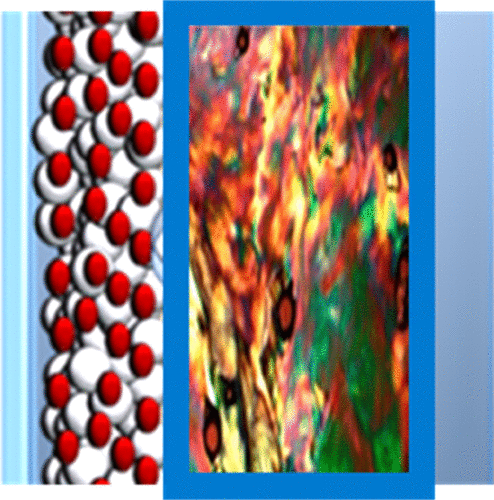当前位置:
X-MOL 学术
›
ACS Sustain. Chem. Eng.
›
论文详情
Our official English website, www.x-mol.net, welcomes your
feedback! (Note: you will need to create a separate account there.)
Ionic Liquid-Based Dye-Sensitized Solar Cells—Insights into Electrolyte and Redox Mediator Design
ACS Sustainable Chemistry & Engineering ( IF 7.1 ) Pub Date : 2021-06-08 , DOI: 10.1021/acssuschemeng.1c01057 Guillaume Bousrez 1 , Olivier Renier 1 , Brando Adranno 1 , Volodymyr Smetana 1 , Anja-Verena Mudring 1
ACS Sustainable Chemistry & Engineering ( IF 7.1 ) Pub Date : 2021-06-08 , DOI: 10.1021/acssuschemeng.1c01057 Guillaume Bousrez 1 , Olivier Renier 1 , Brando Adranno 1 , Volodymyr Smetana 1 , Anja-Verena Mudring 1
Affiliation

|
A series of asymmetric and symmetric 1,3-dialkyltriazolium iodides were studied with hindsight to their application as electrolytes and redox mediators in dye-sensitized solar cells (DSSCs). Compounds with an alkyl chain length from C4 to C10 present the characteristics of ionic liquids (ILs), whilst those with longer chains exhibit liquid crystallinity. All compounds show an appreciable chemical and thermal stability with decomposition temperatures around 185–195 °C. Testing these compounds as electrolytes and redox mediators in DSSCs reveals significant changes in the properties of the electrolyte upon addition of the redox couple. Addition of iodine generally leads to a depression of the melting point and an enhancement of conductivity. These changes in the electrolyte, which are significant, have so far been largely overlooked in DSSC optimization. Furthermore, in comparison to frequently employed imidazolium iodides, 1-alkyl-3-methyltriazolium iodides show both an improved superior efficiency and an extended cell lifetime. This is attributed to the fact that, unlike the imidazolium salts, the triazolium counterparts are not hygroscopic. The nonhygroscopic nature of the salts also renders device fabrication easier. In addition, electrode passivation, which is commonly observed with imidazolium iodides, could not be noticed for the triazolium analogues, making these materials overall extremely attractive.
中文翻译:

离子液体染料敏化太阳能电池——深入了解电解质和氧化还原介体设计
事后研究了一系列不对称和对称的 1,3-二烷基三唑鎓碘化物在染料敏化太阳能电池 (DSSC) 中作为电解质和氧化还原介质的应用。烷基链长为 C 4至 C 10 的化合物呈现离子液体 (IL) 的特性,而具有较长链的则表现出液晶性。所有化合物都显示出可观的化学和热稳定性,分解温度约为 185–195 °C。将这些化合物作为 DSSC 中的电解质和氧化还原介质进行测试,揭示了添加氧化还原对后电解质的性质发生了显着变化。添加碘通常会导致熔点降低和导电性增强。迄今为止,在 DSSC 优化中,电解质中的这些显着变化在很大程度上被忽略了。此外,与经常使用的碘化咪唑鎓相比,1-烷基-3-甲基三唑鎓碘化物显示出更高的效率和更长的电池寿命。这归因于这样一个事实,与咪唑鎓盐不同,三唑鎓对应物不吸湿。盐的非吸湿性也使器件制造更容易。此外,对于三唑鎓类似物,通常在咪唑鎓碘化物中观察到的电极钝化无法被注意到,这使得这些材料总体上极具吸引力。
更新日期:2021-06-21
中文翻译:

离子液体染料敏化太阳能电池——深入了解电解质和氧化还原介体设计
事后研究了一系列不对称和对称的 1,3-二烷基三唑鎓碘化物在染料敏化太阳能电池 (DSSC) 中作为电解质和氧化还原介质的应用。烷基链长为 C 4至 C 10 的化合物呈现离子液体 (IL) 的特性,而具有较长链的则表现出液晶性。所有化合物都显示出可观的化学和热稳定性,分解温度约为 185–195 °C。将这些化合物作为 DSSC 中的电解质和氧化还原介质进行测试,揭示了添加氧化还原对后电解质的性质发生了显着变化。添加碘通常会导致熔点降低和导电性增强。迄今为止,在 DSSC 优化中,电解质中的这些显着变化在很大程度上被忽略了。此外,与经常使用的碘化咪唑鎓相比,1-烷基-3-甲基三唑鎓碘化物显示出更高的效率和更长的电池寿命。这归因于这样一个事实,与咪唑鎓盐不同,三唑鎓对应物不吸湿。盐的非吸湿性也使器件制造更容易。此外,对于三唑鎓类似物,通常在咪唑鎓碘化物中观察到的电极钝化无法被注意到,这使得这些材料总体上极具吸引力。











































 京公网安备 11010802027423号
京公网安备 11010802027423号